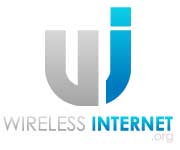AT&T 4G Network Services
The wireless industry is currently going through a big period of transition, as it begins to leave long-used 3G data services behind in favor of much faster 4G speeds and technologies. Each carrier wants to be the first network to unveil their new 4G services, and each is looking for a unique marketing angle. For this reason, many networks have rolled out so-called 3.5G networks while their full 4G network is completed.
This is exactly the case with AT&T, which has begun rolling out an HSPA+ network that is significantly faster than it existing 3G network, but still quite a bit slower than the 4G LTE services that the company will eventually be migrating to over the next several years.
What AT&T Currently Offers
The worldwide standard for fourth-generation data service is the LTE, or Long Term Evolution, wireless standard. It is dubbed "long term evolution" because its already-fast speeds at the time of release can actually be made exponentially faster over the lifetime of its use. This technology does, however, take longer to deploy as wireless companies must mount all-new equipment on their existing towers and test the new services extensively for both voice and data, as LTE can be used for both of these needs.
In the meantime, AT&T as turned to fine-tuning its HSPA network in rural areas, and adding increased speeds and "backhaul" via an HSPA+ networking more densely populated areas. It advertises this HSPA+ service as having theoretical speeds between 6 and 7 megabits per second, about double what its current 3G HSPA network offers customers. Of course, these speeds are dependent not only on signal strength and coverage, but also on having a phone that utilizes HSPA+ as its wireless data technology of choice.
For customers without access to this 3.5G data service, the company promises that 3G speeds will be improving over the next several months as it increases its network backhaul. In simple terms, that means the company is simply increasing its capacity to serve more customers with consistently higher speeds. More capacity means that network speed will be divided less between customers and will result in an overall performance boost for 3G customers.
AT&T's 4G Coverage Areas
Currently, the nation's largest wireless carrier is planning to roll out its LTE data serves in a mere 15 markets nationwide by the end of 2011. It is expected that the company will expand on this footprint, which it says will initially reach 70 million customers, throughout the course of 2012 and 2013. However, no specific plans or markets have been announced beyond the end of the present year.
Customers outside of those 15 markets can generally access the company's moderately faster HSPA+ data services if they're within an urban area or its immediate suburbs. For the rest of AT&T's customers, however, the only data options remain the company's widely available 3G service as well as the second-generation EDGE data technology.
Existing and Expected Rollout Timelines
AT&T's 4G LTE network is currently up and running in five American cities. Those cities include:
- Dallas-Fort Worth, Texas
- San Antonio, Texas
- Houston, Texas
- Atlanta, Georgia
- Chicago, Illinois
Over the course of 2012, the company plans to launch its LTE network in the final ten cities on its 2011 rollout list. Not all of the company's next ten cities have yet been announced to the public, but some have been announced. Those markets include:
- New York, NY
- Philadelphia, PA
- San Francisco, CA
- Washington, DC
- Baltimore, MD
- Athens, GA
- Boston, MA
As should be expected, the company is making the service first available to major metropolitan areas, and then expanding its 4G footprint outward to suburban, exurban, and eventually rural areas across the country. The company plans to keep its users updated via its LTE rollout page at att.com/network.
LTE and Improved Network Speed
It's well-known that 4G services will be dramatically faster, but many consumers aren't aware of just how much faster the service will be when it's finally deployed. The company expects the initial iteration of its 4G LTE service to be more than four times faster than current 3G data services. With a theoretical maximum speed of 15 megabits per second, it will be roughly as fast as using a standard home cable or fiberoptic broadband connection.
Because LTE is designed to grow by leaps and bounds, both in terms of capacity and speed, over the next several years, it is widely expected that the service will be exponentially faster than current 3G networks within the decade. Just how fast those speeds will be will depend on network capacity, device technology, and network deployment.
How to Access AT&T's 4G Services
While 4G will be rolling out over the course of the next several years, only those users with 4G-capable phones will be able to use the technology. At present, AT&T offers just one phone capable of connecting to its LTE network. This is expected to increase as the network becomes more well-developed nationwide.
